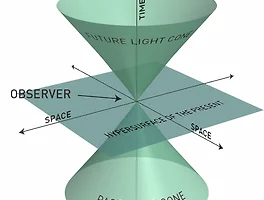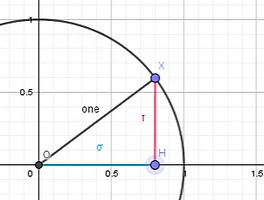<this text is from my note I wrote in 2018.9.29>
Question: Why are there white lines near the Tycho crater?

https://solarsystem.nasa.gov/system/downloadable_items/2798_Tycho_Crater_labeled_843_christmas2015fullmoon.jpg
Craters that can be observed on the surface of the moon are created by collisions with other astronomic objects such as a meteorite. Unlike Earth, the moon does not have an atmosphere that acts as a sheild from those rocks. As an effect, every meteorites headed to the moon never misses its destination. According to research, when a collision happens on the moon, 'moon dust' near the collision point is spread outwards, and is in the color of white, as shown in the picture above. The older the collison is, the less white the marks are, due to wearing off by newer collisions. So, I did an experiment about it.
In order to simulate the collision of a meteor on the moon and the effect it has, I prepared some ingrediants: flour, black sugar(soil can also work), small piecies of stone, and a plastic container(which was big enough to throw the "meteorites" in it, but small enough not to use the flour and sugar more than needed). I thought that, according to the research, when the model surface of the moon is hit by a model meteor, flour would rise and fall near the collision point, spreading white lines outwards on the black sugar. After there are some other hits, the crater marks of the oldest collisions would start to fade.
First, I filled up the container with flour. Then, I covered up the pile of flour with black sugar, using just enough of it to have a clear result of the simulation. Lastly, I threw five "meteorites" and obverved what was happening. Here are the pictures in chronological order.

Ths is before I threw any meteorites at the model surface of moon. As I've explained, I covered the flour(white part underneath the brown) with a fine layer of black sugar(might have been soil).

This is after I threw a meteor at the model surface of the moon. At first, I just dropped the piece, but it had no effect on the layers of flour and sugar. As a result, to deliver more force, I threw it down at the container. As you can see, the white flour has uncovered itself from the covers of sugar, and spread around the collision point(although it wasn't in the shape of lines).

After a few more hits, but still no sign of the fading of a collision mark. I guess it was because I didn't hit anywhere near the first one.

Finally, the first crater mark(left and down) dissapeared! By the last piece thrown(right next to the first one), the mark of the first collision is almost fully erased. By the way, the last collision mark isn't erased; it was just thrown in an angle that didn't leave any mark.
In conclusion, the simulation succeeded. There were white marks near the collision point(though not in a reaching-out way), and it dissapeared as more meteor strikes happended.
'Ideas & Experiments' 카테고리의 다른 글
| Expansion of Kepler's 3rd Law of Planetary Motion (0) | 2021.03.01 |
|---|---|
| Integral of linear polynomials raised to the nth power (0) | 2021.03.01 |
| A Theory on the Grandfather Paradox (0) | 2021.02.01 |
| Relation between Time and Velocity in Special Relativity (0) | 2021.01.30 |
| Pattern of palindromes(팔린드롬의 규칙) (0) | 2020.03.07 |



